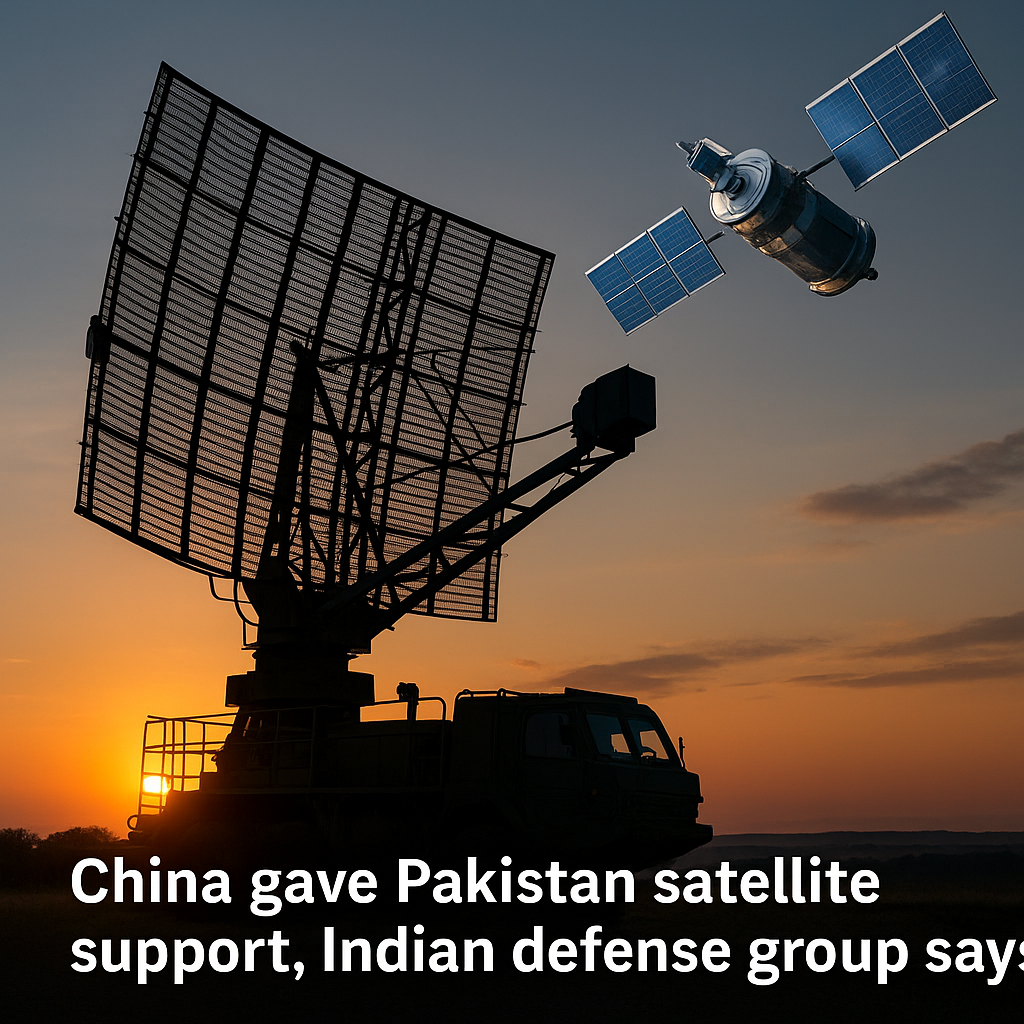In a recent conflict between India and Pakistan, a defense research group has stated that China provided direct help to Pakistan. Satellite observation and assistance in enhancing Pakistan’s air defense systems were part of this support.
Satellite and Radar Assistance from China
These details suggest that China played a more active role in the conflict than many had earlier believed.
According to the research group, China worked closely with Pakistan during the 15-day conflict that followed a deadly attack on April 22. This attack killed 26 Indian tourists and led to serious fighting between the two countries. During this time, China helped Pakistan move and set up its air defense radars. These radars help detect airplanes and missiles, making it easier to respond to threats. With China’s help, Pakistan was better prepared to track Indian military activities from the air.
In addition, China reportedly assisted in adjusting satellite coverage to help monitor Indian military movements more closely. This change allowed for better observation of troop and weapon deployments. Satellite coverage provides real-time images and data, giving an advantage to whoever can see more clearly.
These reports suggest that China’s role was not limited to just supplying weapons. Instead, it also included behind-the-scenes help that gave Pakistan stronger tools for surveillance and defense.
Worst Conflict in 50 Years
The most severe conflict between India and Pakistan in fifty years occurred recently. Both countries used drones, missiles, and fighter jets. There were also heavy exchanges of artillery and small arms fire along the border. The situation became tense after the April 22 killings, which India blamed on Pakistan. However, Pakistan denied any involvement in that attack.
The fighting lasted for weeks, with several international powers becoming involved. A ceasefire that started on May 10 was allegedly facilitated by the United States. However, India claimed to have handled the negotiations directly. A few days later, the neighboring country announced that the ceasefire would continue for a few more days.
Despite the ceasefire, the conflict brought back fears of a larger war. More concerns were raised by Pakistan’s use of Chinese-made missiles and drones. A number of these weapons had never been utilized in actual combat. Among them were China’s PL-15 air-to-air missile and J-10C fighter plane. Though Pakistan claimed it shot down Indian jets using these systems, there was no independent proof of this. India has not confirmed any loss of aircraft during the fighting.
Some reports also mentioned that Chinese weapons didn’t perform as expected. According to Indian military assessments, some of these systems failed to work properly. But no detailed information was given about how they failed or in what situations.
Rising Worries About Two-Front Threat
The idea of dealing with a two-front threat is now receiving more attention in India. This means being prepared to handle challenges from both the western and northern borders at the same time. India’s military strategies are being adjusted to include the possibility that China could support its western neighbor in future battles, even if not directly.
The long-standing dispute between India and Pakistan mainly revolves around Kashmir. Tension has existed in this area for many years. Both countries claim it in full, but each controls a different part. This latest conflict only adds to the difficult history between the two neighbors.
Meanwhile, China and Pakistan have shared close ties for many years. Their cooperation includes military training, weapons sales, and large infrastructure projects. China’s Belt and Road initiative has made significant investments in Pakistan. In contrast, India has shifted some of its military forces to the border with China in recent years. This shift followed a deadly clash in 2020, where soldiers from both sides lost their lives.
Even though China and India have made some efforts to improve their relationship recently, this new report has added fresh concerns. The claim that China provided satellite support and helped set up radar systems for India’s western rival shows a deeper level of involvement. It highlights how modern conflicts are not only fought with guns and bombs, but also with technology and intelligence.
The situation shows how complex regional conflicts can become when powerful nations are involved behind the scenes. China’s reported actions during the India-Pakistan conflict have now become part of that larger picture.



